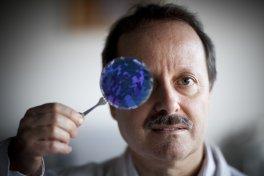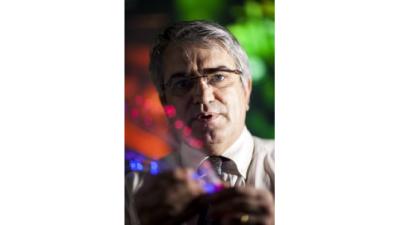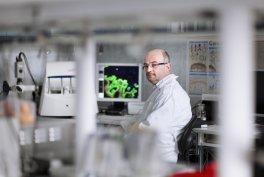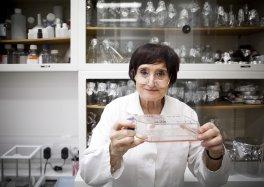Per-Ingvar Brånemark
Titanium fixture and anchoring device for implants
Winner of the European Inventor Award 2011 in the category Lifetime achievement
The human body naturally rejects foreign objects, even restorative inserts such as implants and prostheses. When Swedish orthopaedic surgeon Per-Ingvar Br ånemark discovered an exception to this rule, he virtually revolutionised the field of implant technology.
Individuals suffering from severe tooth loss, whether through unpreventable accidents, debilitating diseases or run-of-the-mill dental decay, often also experience a dramatic loss in the quality of their everyday life.
Therefore, restoring such persons' ability to chew is a main priority for dental healthcare providers.
With human tissue naturally rejecting foreign objects dental implant technology suffered from severe limitations, with some cases remaining beyond medical help until just a few decades ago.
In 1952, Brånemark learned of an experiment at Cambridge University in which researchers had successfully integrated a tantalum chamber into the soft tissue of a rabbit's ear.
Brånemark decided to re-do the experiment himself, this time inserting a titanium chamber into a rabbit's tibia to test its interactions with bone tissue. He then proceeded to discover that inserts made from titanium could be safely conjoined with human bone tissue.
In 1965, dental implant technology took a significant step forward when he performed his first successful implant on a human subject. During the course of his career he has continued to refine his approach into what has become the gold standard of dental implantation globally - the method of osseointegration (from the Latin "os" for bone).
Since then, more than eight million people have benefited from Brånemark's landmark methods.
The main advantage of this technique lies in the relatively mild nature of the surgery it requires as well as the fact that patients are able to chew normally with the prosthesis.
Once the Swedish Health Authority gave Brånemark's implantation method the green light for clinical use in 1978, Swedish defence company Bofors began marketing the dental technology.
Together with Brånemark, it launched Nobelpharma (now Nobel Biocare) in 1981 as a subsidiary offering dentalcare solutions based on the inventor's patented technologies.
Today, Nobel Biocare services roughly 35% of the world's dental implant market, with over 2200 employees worldwide and a 2009 revenue of €581.4 million.
Titanium implants represent the standard method in dental implantology today, with an impressive success rate of 90-95% over the first two years after surgery, and an astounding 98% over the average lifetime.
Brånemark's impact on the field of prosthetic technology has been wide-ranging and his revolutionary method has extended beyond dental applications. During the 1970s his method began to be used in maxillofacial applications for replacing ears, eyes or noses lost by tumours, trauma or congenital defects. Furthermore, it was used for bone anchored hearing aids. In the 1980s, Brånemark began to apply his method of osseointegration to orthopaedic applications, a field which his son Rickard is continuing to explore today, as he is further developing Brånemark's method to anchor prosthetic arms and legs.
Contact
European Inventor Award and Young Inventors Prize queries:
european-inventor@epo.org Subscribe to the European Inventor Award newsletterMedia-related queries:
Contact our Press team#InventorAward #YoungInventors




